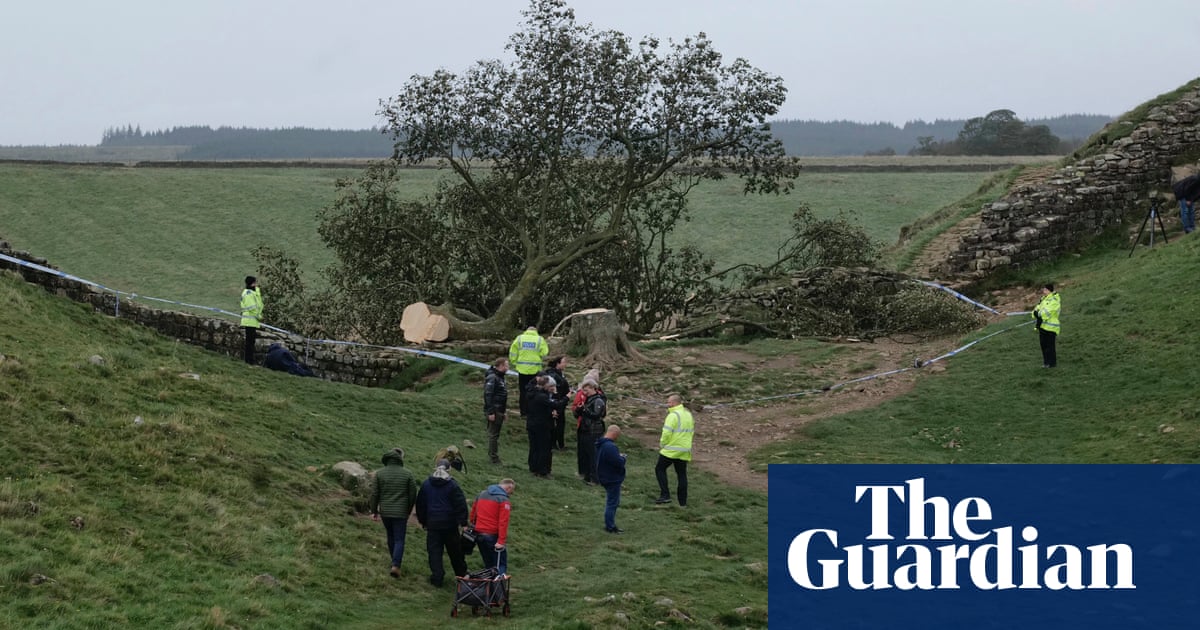
It was a year of fire and storms, of crumbling cliffs and falling trees, all of which put a huge strain on flora and fauna, according to an annual audit of the impact of the weather on nature in the UK.
There were many losers, including rare birds and mammals displaced by blazes on uplands in the north of England and Northern Ireland, but also winners, from crickets heard singing for the first time in newly colonised places to the grey seals that enjoyed a good breeding season despite the turmoil.
The National Trust said this helter-skelter picture was the new normal because of the climate emergency, and age-old patterns of nature and the very shape of the UK were undergoing quick – and permanent – change.
“Climate change is making some forms of extreme weather events the new normal,” said Ben McCarthy, the head of nature conservation and restoration ecology at the conservation charity. “Heatwaves and heavy rainfall are becoming more frequent and more intense. What we’re seeing in the UK, with the impacts of wildfires and severe storms such as Arwen, is how climate change is altering our landscapes for ever.”
Lowlights of 2021 included wildfires taking hold at Marsden Moor in Yorkshire and the Mourne Mountains in Northern Ireland after long dry spells. In Yorkshire the habitat of birds such as the curlew, golden plover and short-eared owl was harmed, while in Northern Ireland skylark, meadow pipit and snipe, plus the Irish hare, were badly hit.
In November Storm Arwen wreaked havoc on parts of northern Britain, uprooting thousands of trees including cherished specimens, such as a champion coast redwood at Bodnant Garden in north Wales.
Warmer, wetter winters are resulting in diseases such as ash dieback taking hold and causing significant loss of trees, affecting landscapes and habitats. At least 30,000 ash trees are expected to be felled this winter because of ash dieback, at a cost of £3m, up from £2m last year, the National Trust says.
On the Dorset coast, 90 metres of cliff crumbled in April, again probably because of the prolonged dry spell, changing the shape of that stretch of coast.
It was a poor year for butterfly numbers, and scientists are still puzzling over the mysterious deaths of seabirds off the east coast.
“Extreme events are putting even more pressure on Britain’s wildlife, which is already in trouble,” said McCarthy. “We finish the year with many places changed for ever by the recent storms, demonstrating the power of nature, the changing climate and how our role in its future is even more critical.
“What is absolutely clear is that we need to tackle both the climate and nature crises as they are integrally linked and we need to make urgent progress with both. Our nature is part of what makes the UK unique and we must all play our part to protect it.”
It may or may not turn out to be a good year for toads on the Lizard peninsula in Cornwall, the most south-westerly point of mainland Britain. Toadspawn was spotted as early as mid-November. If they are lucky, the toadlets will be off and independent before the puddles and ponds dry out in spring, but if not they may fall victim to frost.
Wildlife winners and losers in 2021
Wildflowers There were early hazel catkins in the winter and carpets of bee orchids in the summer at clifftop locations such as the Golden Cap estate in Dorset, thanks to a dry March and warm June, but further along the coast at Thorncombe Beacon, slippages of clay hit the beautiful populations of the pinkish herb common centaury.
Butterflies Butterfly Conservation’s Big Butterfly Count recorded the lowest numbers since the event began 12 years ago. Some of the UK’s most loved species, including the small tortoiseshell and peacock butterflies, dropped. Numbers of the endangered large blue were down at National Trust sites in Somerset and Gloucestershire, where the species was introduced in 2019, because of the cool spring.
Birds The chilly April and rain and gales in May led to a poor nesting season for many species. Barn owls abandoned nesting areas at Mount Stewart in Northern Ireland, while lapwings at Blakeney Freshes in Norfolk were put off by the cold ground conditions. In late summer guillemots and razorbills were found dead or dying along the east coast of Scotland and northern England. The reason remains unclear. Swallows, house martins and swifts arrived late in the season, probably put off by persistent northerly winds in the spring.
Fungi A bumper year for grassland fungi, especially waxcaps, owing to a warm, damp autumn with little or no frost. In Herefordshire, conservationists discovered a striking alien species called devil’s fingers (also known as octopus stinkhorn) introduced to Europe accidentally from Australia or New Zealand.
Seals, dormice and squirrels Grey seal colonies have had a good year, with pup numbers healthy thanks to the lack of predators and plentiful food. Dormice on the Holnicote estate in Exmoor did well, with good numbers seen during box checks in the autumn. Three red squirrel kittens were born on Brownsea Island in Dorset, one of the latest second litters the team has recorded.
Interesting sights and sounds More than 100 species of spiders were recorded at Clumber park in Nottinghamshire, including the critically endangered diamond-backed spider. A small red-eyed damselfly was seen at Wenlock Edge in Shropshire, an indication that it is spreading north in response to climate change. An Italian tree cricket was heard singing at West Bexington in Dorset. This sound of the Mediterranean has been heard in Kent for several years and tree crickets now seem to be colonising other places.












